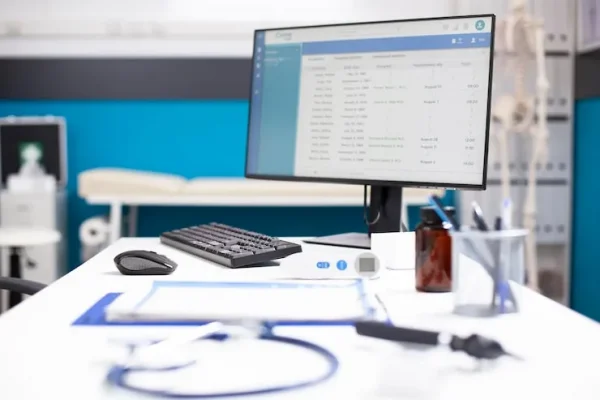If you manage a medical practice, clinic, or healthcare facility, you already know that modifiers in medical billing and coding can be tricky. Sometimes they’re straightforward, and other times… they feel like they were invented just to test your patience.
Two of the most confusing? Modifier 52 and Modifier 53. They look similar on paper; they both deal with procedures that didn’t go exactly as planned, but they mean very different things.
And here’s the thing: using the wrong one isn’t just a minor typo. It can lead to denied claims, delayed payments, and way too many follow-up calls with insurance companies.
At Cadence Collaborative, we’ve helped countless providers get this right the first time. By the time you’re done reading, you’ll know exactly when to use 52, when to use 53, and how to keep your claims moving without a hitch.
What Is Modifier 52?
Let’s start with the easier of the two.
Modifier 52 is used when a provider performs less than the full service described in the CPT code, but still completes enough of it to report and bill for it.
In other words, the service happened, but for a valid reason, it was partially reduced, not because of complications, but because that’s all the patient needed or could tolerate at the time.
How It Works in Practice
Say a physician schedules a diagnostic colonoscopy. Once they begin, they find it’s only necessary to inspect part of the colon because the clinical question has already been answered.
The service was still completed in a meaningful way, but it wasn’t the full “scope” described in the CPT book.
That’s a Modifier 52 moment, you signal to the payer that the service was intentionally reduced but still billable.
Another example:
- A radiologist orders a full chest X-ray series but ends up doing only two views because additional images weren’t clinically needed.
Key Points to Remember
- Modifier 52 is proactive; you know during the service that it will be less than the full CPT definition.
- There’s no “emergency stop”; it’s an intentional or necessary limitation.
- Documentation is critical: explain why the service was reduced so that the payer understands the medical necessity.
Why It Matters for Medical Billing and Coding
Using Modifier 52 correctly ensures you’re not overbilling for work you didn’t do, but also not underbilling and leaving money on the table.
At Cadence Collaborative, we see Modifier 52 as a classic example of where medical billing and coding services make a big difference.
A missing explanation, the wrong CPT pairing, or unclear documentation can slow down payment or trigger audits. Getting it right the first time keeps claims moving.
What Is Modifier 53?
If Modifier 52 is about reducing a service on purpose, Modifier 53 is about stopping a service because something went wrong, either for the patient’s safety or due to unforeseen circumstances.
The official name is Discontinued Procedure, and it’s used when a procedure or service has to be halted after it’s already begun, usually because continuing would pose a risk to the patient.
How It Works in Practice
Picture this: A surgeon begins a laparoscopic gallbladder removal. Midway through, they discover unexpected complications that make it unsafe to proceed. For the patient’s safety, they stop the procedure.
Or… A gastroenterologist starts a colonoscopy but encounters severe patient discomfort or unstable vital signs that require stopping immediately.
In both cases, the provider has started the service, but clinical judgment says “stop” before it can be completed.
Key Points to Remember
- Modifier 53 happens mid-procedure. You start, then stop for clinical or safety reasons.
- Patient well-being is the priority; documentation must clearly state why continuing was unsafe.
- It’s not about choosing to do less; it’s about having to stop entirely before completion.
Why It Matters for Medical Billing and Coding
From a billing perspective, Modifier 53 tells payers:
“We started the procedure, invested time and resources, but had to stop for medical reasons.”
This helps ensure the provider is still compensated for the work performed, even though the full service wasn’t delivered.
At Cadence Collaborative, our medical billing and coding services focus on making sure Modifier 53 claims are supported with strong documentation (including procedure notes, patient vitals, and clinical reasoning) so insurers understand the necessity and process payment without extra back-and-forth.
Modifier 52 vs. 53: The Key Differences
Even though Modifier 52 and Modifier 53 both signal that a service or procedure didn’t go exactly as originally planned, the reason why it changed is what separates them.
Modifier 52 is used when a service is intentionally reduced. The provider decides during the procedure that a smaller portion is all that’s needed or clinically appropriate. The service is still completed in a meaningful way.
Modifier 53 is used when a service is stopped for safety or medical reasons. The provider begins the procedure but cannot finish it because continuing would put the patient at risk or due to an unforeseen complication.
How to Remember the Difference
Think about control:
- With Modifier 52, the provider is in control and chooses to limit the service.
- With Modifier 53, something unexpected takes control, and the provider must stop for the patient’s safety.
Common Mistakes and How to Avoid Them

Even experienced coders and billers sometimes mix up Modifier 52 and Modifier 53.
The problem isn’t just academic; these errors can slow down payments, create extra back-and-forth with payers, and, in some cases, trigger compliance reviews.
Mistake 1: Using Modifier 53 When It’s Actually 52
This happens when the service is reduced intentionally, but the coder assumes any change means “discontinued.”
For example, performing fewer X-ray views than ordered because additional views aren’t clinically necessary should be Modifier 52, not 53.
How to avoid it: Ask if the provider stopped due to an unexpected issue, or chose to do less because that’s all that was needed. If it’s the latter, use 52.
Mistake 2: Forgetting Documentation
Payers won’t just take your word for it. If you use Modifier 52 or 53, you must clearly document:
- What was planned?
- What was actually performed?
- Why was it reduced or discontinued?
How to avoid it: Build a checklist into your workflow so documentation is created at the same time as the procedure note.
Mistake 3: Wrong CPT Pairing
Some CPT codes aren’t compatible with these modifiers, and using them anyway can cause instant denials.
How to avoid it: Check payer-specific guidelines and CPT instructions before assigning the modifier.
Conclusion: Get Modifiers Right the First Time
Modifiers 52 and 53 may seem similar at first glance, but now you know they serve completely different purposes.
Modifier 52 is for reduced services when the provider intentionally performs less than the full CPT definition.
Modifier 53 is for discontinued procedures, when the provider must stop for safety or medical reasons after the service has begun.
Using the correct modifier isn’t just a matter of coding accuracy. It’s the key to:
- Avoiding claim denials and delays.
- Securing proper reimbursement for the work performed.
- Staying compliant with payer and regulatory requirements.
And the truth is, in the fast-paced world of healthcare, even a small error in modifier usage can slow your revenue cycle down dramatically.
That’s why working with an experienced medical billing and coding company like Cadence Collaborative isn’t just helpful, it’s essential.
We know the rules, we understand payer expectations, and we build airtight documentation processes so your claims move through the system without unnecessary roadblocks.
If you want fewer headaches, faster payments, and absolute confidence in your coding accuracy, partner with us, your trusted experts in medical billing and coding services.
Let’s talk about how we can optimize your billing process. Contact us today!






